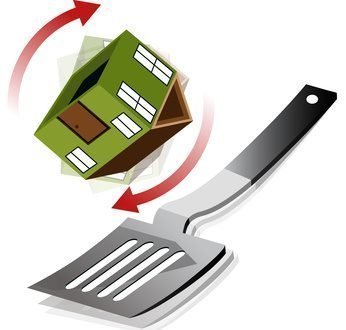By Frank Pulley and William Bronchick, Esq.
Real estate investors, especially the new ones, sometimes overlook or pass on deals that could possibly make them a nice profit. They tend to become fixated on one or two types of deal scenarios and often overlook the other ways of selling a property. It is all in how you look at it and if you have the know-how to explore the possibilities.
We are not going to go into all of the details and the methodology of each of these “Flip” exit strategies, you can go look at all of the Free Content we offer on this website as far as articles, videos, and podcasts. All of these are covered in some form or other. For even more, in-depth info, one can go into our Legalwiz.com Store.
Here are 5 Ways to Flip a Property:
- Wholesale to Another Investor. New investors find themselves wanting to buy a property and then sell it at a profit. The problem is, some have little if any, money and sometimes their credit is poor. Wholesaling to another investor is a great way to make a small profit and sell it quickly to another investor. It also allows you to make “chunks of cash” to build your budding real estate business. You should plan on making from 3-5% of the final selling price of the property, whereas the investor should make 10-15%. Remember, they are taking more risk than you are. However, it saves the rehabber time and money in marketing.
The trick is to find properties in need of fix-up along with a motivated seller and then negotiate a price that allows you a small profit and yet makes sense for an investor to spend money on fix-up, carrying costs, marketing costs, and more to make a fair profit. The advantage of this is that you don’t need much money or even credit to do this, but this is a very time-sensitive method of flipping.
An often-overlooked end buyer is a landlord that you can flip to. Normally they can pay a bit more than a rehabber and won’t spend as much in fixup as a rehabber will.
- This is where you buy a property at a wholesale price and actually do a bit of the preliminary work to the property such as cleanup, (inside and out) possibly do some minor repairs and maybe even a bit of landscaping. Because you have done this and will save the rehab investor some money and time, you can normally command a bit higher price than just a straight wholesale. Remember that you need to make a profit from your time and labor when doing the prehab or you are just wasting time and money. Time is of the essence and in some situations, if your “prehab” takes too long, you may need to borrow some short- term money from a private lender, partner, or investor to carry you through the time you purchase until you sell the property.
- Buy, Fix and Flip. This is the most popular and standard way for investors to exit a property and should allow for a good net profit of 10-15% if the numbers are done correctly and the purchase price is low enough. You must make sure you plan out all your costs in advance, such as rehab, carrying costs, lender costs, closing costs, and most likely, realtor commissions. You should always plan a 10-15% contingency on these expenses as rehabs often seem to take more time and cost a bit more than originally planned. Unless you have a lot of cash or have a partner that has cash, you will likely need to borrow money from a private “hard money lender” for 4-6 months to carry you through the project.
- Buy and Flip “As-Is” to an Owner Occupant. This can be done when you have a property that needs some work. You can advertise this as a “Needs Work” property on a “For sale by Owner” site or on the MLS unless you already have a buyer lined up in advance. This works best when the buyer already has cash, as banks are often hesitant to finance a property that needs a significant fix up unless the buyer’s purchase price from you is low enough. As your holding time may be longer than a conventional wholesale, you may need transactional cash, a money partner, or private lender to hold the property the amount of time you may need to flip it to an owner-occupant and for them to obtain the funds. Make sure you plan for this in your expenses.
- Wholetail (Wholesale to an Owner-Occupant). This method is probably least common but once again is most successful when you already have a list of buyers, rehabbers, landlords, and potential owner-occupants in advance. This is a property that you obtain at a low enough price that doesn’t take much, if any, fixup and is ideal for an owner occupant; and the numbers are high enough that the deal doesn’t make sense for a rehabber or landlord. You will normally have to market it like the “Buy and Flip to an Owner-Occupant” (#4 above) and you may need to either have cash, a money partner, or borrow transactional money. Because the property is in good shape and relatively low priced, the end buyer may have a bit easier time in borrowing the money as it’s valued should come in well under the actual appraised price. If you purchase this at a low enough price and sell it aggressively, you can possibly make some good money on these types of transactions.
We’ve talked about 5 ways to flip a property. There may be others such as a mutation between a couple of the above- mentioned techniques. Being educated is the key and also being connected.
